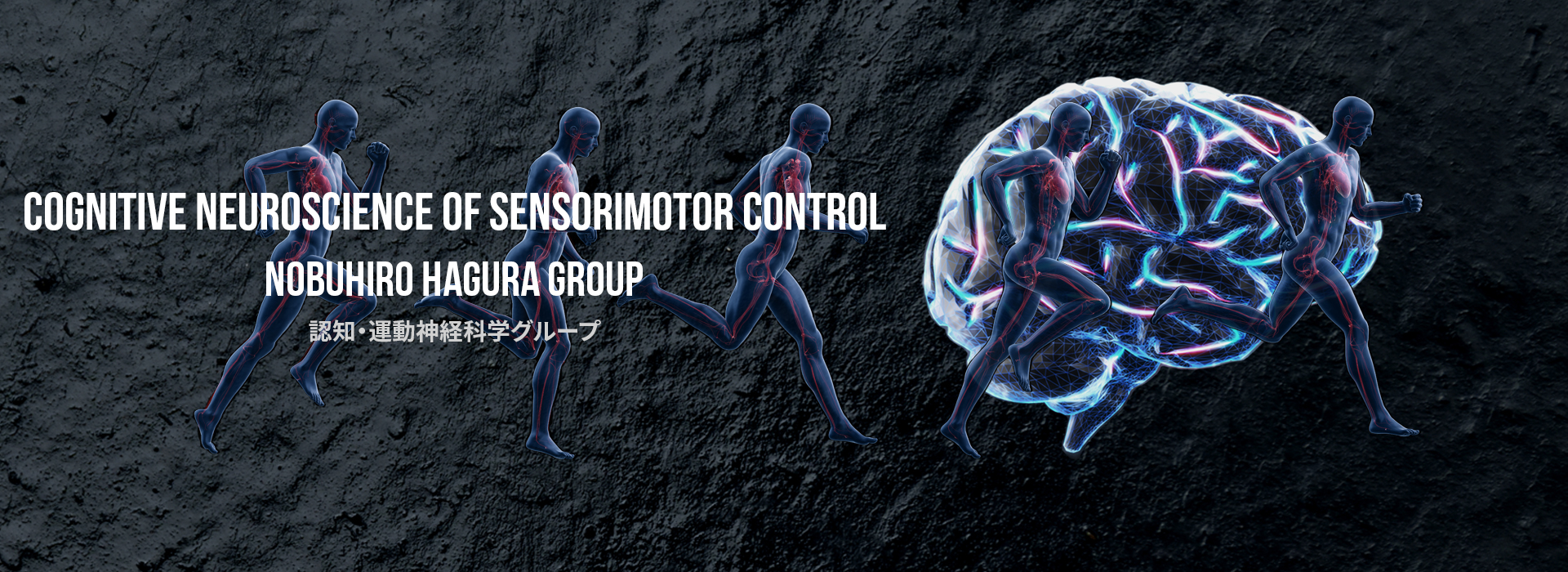Press release and media coverages
Some of our findings (see below for detail) have been press released and covered by popular medias.
Learning to Act in the Face of Uncertainty: Our brain learns and remembers actions differently based on the level of decision uncertainty

- Ogasa K, Yokoi A, Okazawa G, Nishigaki M, Hirashima M, Hagura N*
Decision uncertainty as a context for motor memory. Nature Human Behaviour, 2024.
Press release
https://www.nict.go.jp/en/press/2024/07/03-1.html
In a football (soccer) penalty shootout, a player may decide to confidently kick the ball to the right corner upon observing the goalkeeper moving in the opposite direction. Alternatively, the player might make the same kick while being unsure about the goalkeeper’s movement. Although the physical action—kicking the ball to the right—is identical in both scenarios, this new study reveals that the brain tags these actions differently based on the decision uncertainty involved. This discovery suggests that motor memories are not simply repetitions of the same action but are influenced by the cognitive processes leading up to them.
This research opens up new avenues for developing novel training methods in sports. By associating skill training with various decision-making situations, athletes can enhance their performance by refining their motor memories in context-specific scenarios.
Featured as Spotlight paper in Trends in Cognitive Sciences
https://www.sciencedirect.com/science/article/pii/S1364661324001979Other Japanese medias
https://www.asahi.com/articles/ASS6G4TBYS6GULBH00CM.htmlhttps://internet.watch.impress.co.jp/docs/news/1601443.html
https://nazology.net/archives/152313
https://medicalxpress.com/news/2024-07-brain-motor-memories-differently-based.html
The grape hanging high up on the tree is indeed perceived as unripe?: Decision making and the effort to express the decision

- Hagura N*, Haggard P, Diedrichsen J
Perceptual decisions are biased by the cost to act. eLife, 2017
Press release
https://www.nict.go.jp/press/2017/02/22-1.html
https://www.ucl.ac.uk/news/2017/feb/humans-are-hard-wired-follow-path-least-resistance
Perceptual decision making refers to a decision based on the feature of the sensory input, such as the redness of the apple while choosing the reddest apple from the basket. Previous studies have mainly focused on the neuronal mechanisms of how the sensory feature is transformed into the decision. Instead, we focused on the effort required to express after the decision, and found that the effort is also incorporated in the decision-making process, and can even change the interpretation of the feature (i.e. apple requiring more effort to pick does not look red).
The study shows the inter-dependency of perception and action and gained attention in the media.
Featured as Spotlight paper in Trends in Cognitive Sciences
https://www.cell.com/trends/cognitive-sciences/fulltext/S1364-6613(17)30049-9Forbes
https://www.forbes.com/sites/carolinebeaton/2017/02/22/new-research-shows-that-were-wired-to-take-the-path-of-least-resistance/?sh=4267271366d3Neuroscience News
https://neurosciencenews.com/path-of-least-resistance-6139/Is the ball really slowing down when about to hit the ball?: Time dilation effect during motor preparation

- Hagura N*, Kanai R, Orgs G, Haggard P
Ready steady slow: action preparation slows the subjective passage of time. Proceedings of the Royal Society B; Biological Sciences, 2012
Press release
https://www.ucl.ac.uk/news/2012/sep/ready-steady-slow-why-top-sportsmen-might-have-more-time-ball
Legendary Japanese baseball player Tetsuharu Kawakami once remarked that the “ball slows down when about to hit it.” Similarly, renowned tennis player John McEnroe has described comparable experiences. Inspired by these anecdotes, our research demonstrates that this phenomenon is not unique to superstar athletes. When participants prepare to move their hands toward a target, their visual processing of the target intensifies, making time feel as though it has slowed down. This finding reveals that visual processing is not merely a passive response to sensory input but is influenced by the brain's preparation for action. This study, which uncovers the mechanism behind athletes’ experiences, garnered worldwide media attention.
BBC
https://www.bbc.com/news/science-environment-19477623LeFigaro
https://sante.lefigaro.fr/actualite/2012/09/06/19002-comment-grands-sportifs-arrivent-ralentir-tempsNational Geographic
https://www.nationalgeographic.com/science/article/ready-steady-slow-time-slows-down-when-we-prepare-to-moveIs Szechuan pepper spicy?: The reason why Szechuan pepper makes buzz on your tongue

- Cataldo A#, Hagura N#, Hyder Y, Haggard P*
Touch inhibits touch: sanshool-induced paradoxical tingling reveals perceptual interaction between somatosensory submodalities. Proceedings of the Royal Society B; Biological Sciences., 2021 - Kuroki S*, Hagura N*, Nishida S, Haggard P, Watanabe J
Sanshool on the fingertip interferes with vibration detection in a rapidly-adapting (RA) tactile channel. PloS One, 2016 - Hagura N*, Barber H, Haggard P*
Food vibrations: Asian spice sets lips trembling. Proceedings of the Royal Society B; Biological Sciences., 2013.
Press release
Many people believe that Szechuan pepper, commonly used in Chinese cuisine, is hot and spicy. However, physiological studies have shown that its main component, sanshool, activates the light-touch sensors on the skin. In a series of studies, we discovered that sanshool appears to stimulate specific sets of nerve fibers that process vibrations in the 30–50 Hz range. In other words, applying sanshool to the lips produces a sensation similar to placing a 30–50 Hz vibrator on them. Additionally, we proposed that sanshool can serve as a tool to study the interaction between light-touch fibers responding to different input frequencies. This research, due to its connection to familiar culinary experiences, attracted significant media attention.


